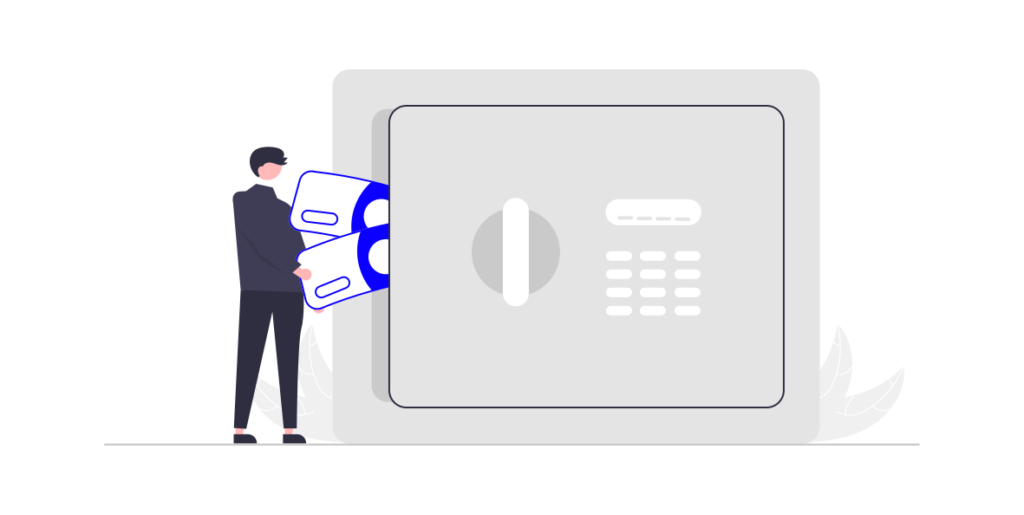Switching bank accounts has a bad reputation, often seeming just as stressful as opening the account in the first place. One of the biggest worries is usually of things going wrong. Sound familiar? After all, the handling of your finances is integral to the success of your business.
The perceived stress of switching bank accounts may dissuade people from the change. Despite it not serving them anymore, they stay with their bank to save the hassle. This is even despite being possibly able to get a better deal or services somewhere else.

However, switching accounts is easier than it has ever been! The rise of internet banking means that you no longer have to physically go into the bank to switch, and new services like the Current Account Switch Guarantee ensure that moving accounts is as easy as signing a form.
Why Would I Want to Switch my Business Bank Account?
Businesses and their needs are constantly changing. What you need from your business bank account may have evolved and look quite different to the way they did when you first opened your account. Here are a few reasons it may be time to change your business bank account provider.
You may need more from your bank than they can offer. They may charge transaction or transfer fees or have withdrawal limits, for example. If you deal in a lot of cash, this can run up hefty charges or limit your ability to maximise your profits.
It may be too expensive. The maintenance payments for your business account are generally a point of contention for many users. It may become too much, or there may be unseen fees that you were not aware of at opening.
While there is a general level of trust in banks, expectations are rising along with frustration and confusion over complex and opaque fee structures. You want to ensure that your account is at best making you money through interest, and at worst, maintaining your profit. If your account fees are beginning to be the biggest transaction from your account, it may be time to revaluate.
You don’t need the services they offer. When you first open your account, you may be drawn in by brick-and-mortar banking. However, you may find as you go that you don’t use these services as much.
You may not need to withdraw money as much, or in-person services are too time-consuming to get to or take advantage of. You may even need a bank that supports an online platform better for more convenient access to your finances anywhere.

You may simply be unhappy with customer service. The bank you originally chose might not be giving you the support you need. They may even just not solve problems you have in the way you want. You want your bank to grow with you and support you through your journey as a business, and if they don’t best meet your needs, you may need to switch!
If you’re running into one or more of these issues a lot, you may want to consider changing your account. These are all things that you learn as you go with business bank accounts. Remember, not everyone gets it perfect first time!
How Do I Actually Switch Business Bank Accounts?
So, you’ve decided that you’re ready to change banks. While it can be hard to know where to begin with everything, we’re here to help. Here are five comprehensive steps to follow in order to move accounts stress free!
- You must first pick your new account. This is the time to re-evaluate the account you have. What is working for you? What isn’t? Is there anything that’s missing that you want? This evaluation will help immensely in figuring out what you want your new account to provide for you.
- Apply for your new account. Once you’ve found the account for you, it’s time to apply! This step is one you’ll already be familiar with, as you’ve done it before. It is the same process as setting up your first account. Make sure you have all the documents you need to hand, as this will make the process go much more smoothly.

- Make sure you know what your new account offers for your switch. In 2021, most banks offer the Current Account Switch Guarantee. However, it is important to make sure they do – they are usually labelled clearly with the symbol. This guarantee means that you simply sign a form, and the new bank does the rest. This process ensures many things, such as:
- All payments both in and out are automatically moved for you, and any accidental payments to the old account are rerouted to your new account.
- As part of the agreement, any senders will also be contacted with your new details, so you don’t have to worry about it.
- The new bank must refund you for any charges incurred as a result of a direct debit or standing order not having been successfully transferred to the new account.
- You can put things in place to pay off your old overdrafts if that is applicable to you. The new bank may also just take on your overdraft if it seems feasible. Make sure you enquire about this if necessary.
- Now it’s time to choose a switch date! Your old account can be used up until this date. The account switches on the day you choose, and your old account will close automatically on switch date. You can use this deadline to inform the necessary people of your account change if you so wish!
- It’s time to get on and use your new account!
3 FAQs About Switching Business Bank Accounts
How long will the switch take?
The transfer period has reduced radically thanks to the Current Account Switch Guarantee. It has gone from taking between 18 and 30 days after the new account had been opened to only taking seven business days. It’s now a streamlined process and is efficient as possible to get you the best results possible.
Will switching affect my credit score?
Yes, switching business bank accounts can affect your credit score. This is because any kind of credit check does in turn reduce your credit score. However, it is important to remember that for most lenders, the impact on your score is believed to be minimal.

While it can be beneficial to have a longstanding relationship with your bank when you apply for credit , the actual credit history itself is the most important part. This is more important than switching accounts. So don’t let this scare you away from finding yourself a better account or a better deal!
What if there are issues with the switch?
If you have any issues either during or after your account switch, your first port of call should be directly to your new account provider. Give them the opportunity to solve things for you, as most providers will be eager to make your transition as smooth as possible.
The next step to take is when you’ve exhausted all complaint options with your new bank. Once eight weeks have passed, you should start the process of contacting the Financial Ombudsman. Remember, this should be a last resort! They can help with any issues you have if your new bank have been disappointing or unhelpful.
The current account switch guarantee website also has some helpful support resources here if you’re struggling with your switch.
Conclusion
You should always be re-evaluating your relationship with both your bank and your account. This will make sure that your bank account meets your needs, and that you’re getting the most out of the services the account offers. It also helps to make sure that nothing is going wrong and it’s all running smoothly.
If you see a problem, address it! Don’t be afraid of change when it comes to your bank. It may be the best way to continue to support and grow your business.
Related Articles
- Do You Need a Business Bank Account?
- How to Choose the Best UK Business Bank Account
- What are the Four Best Business Bank Accounts?
- 7 Different Types of Business Credit and Debit Cards
- How To Save Money With Your Own Business
If you need further assistance in switching your business bank account, don’t hesitate to reach out to one of our financial experts. Contact Count here today!